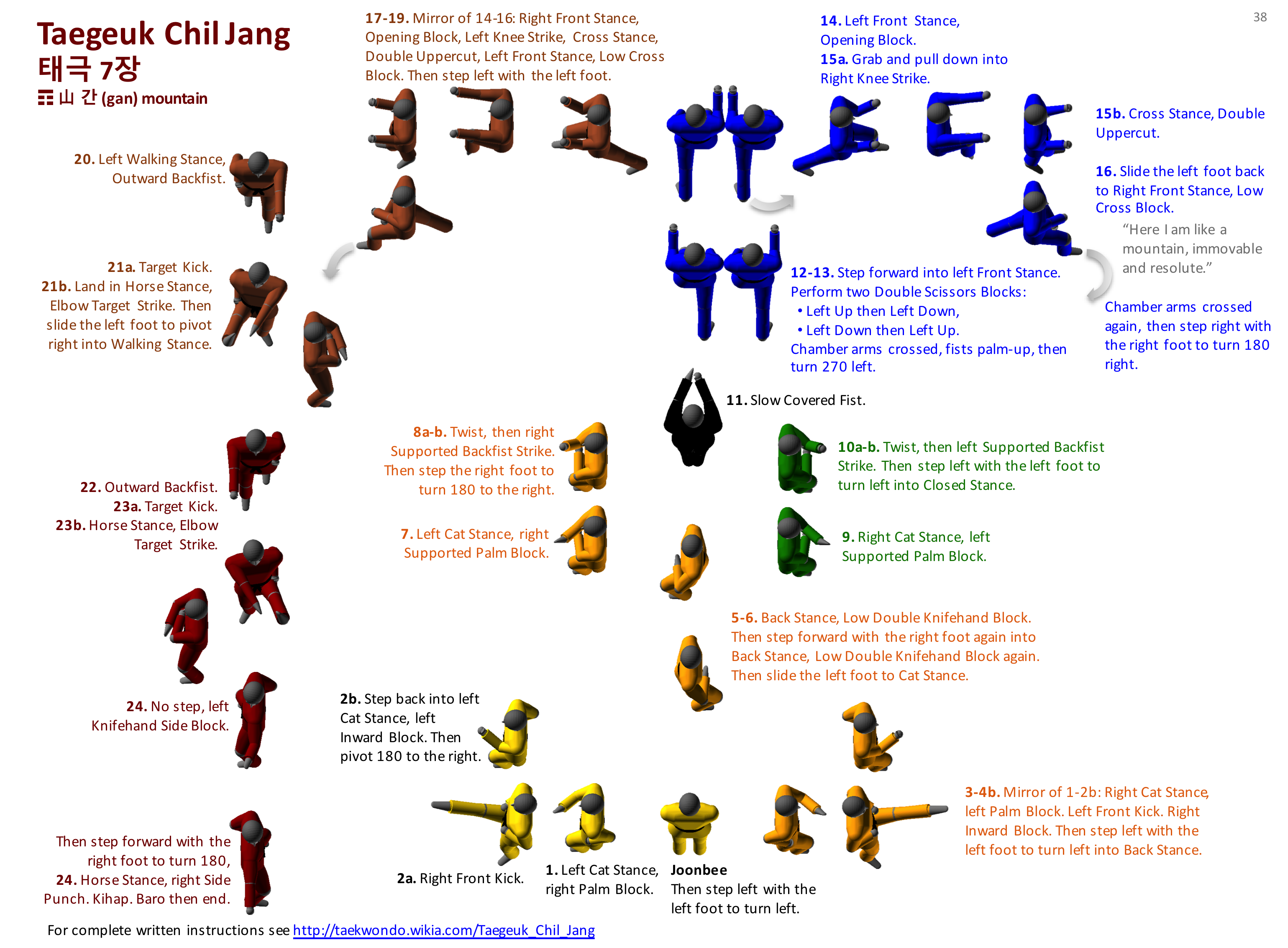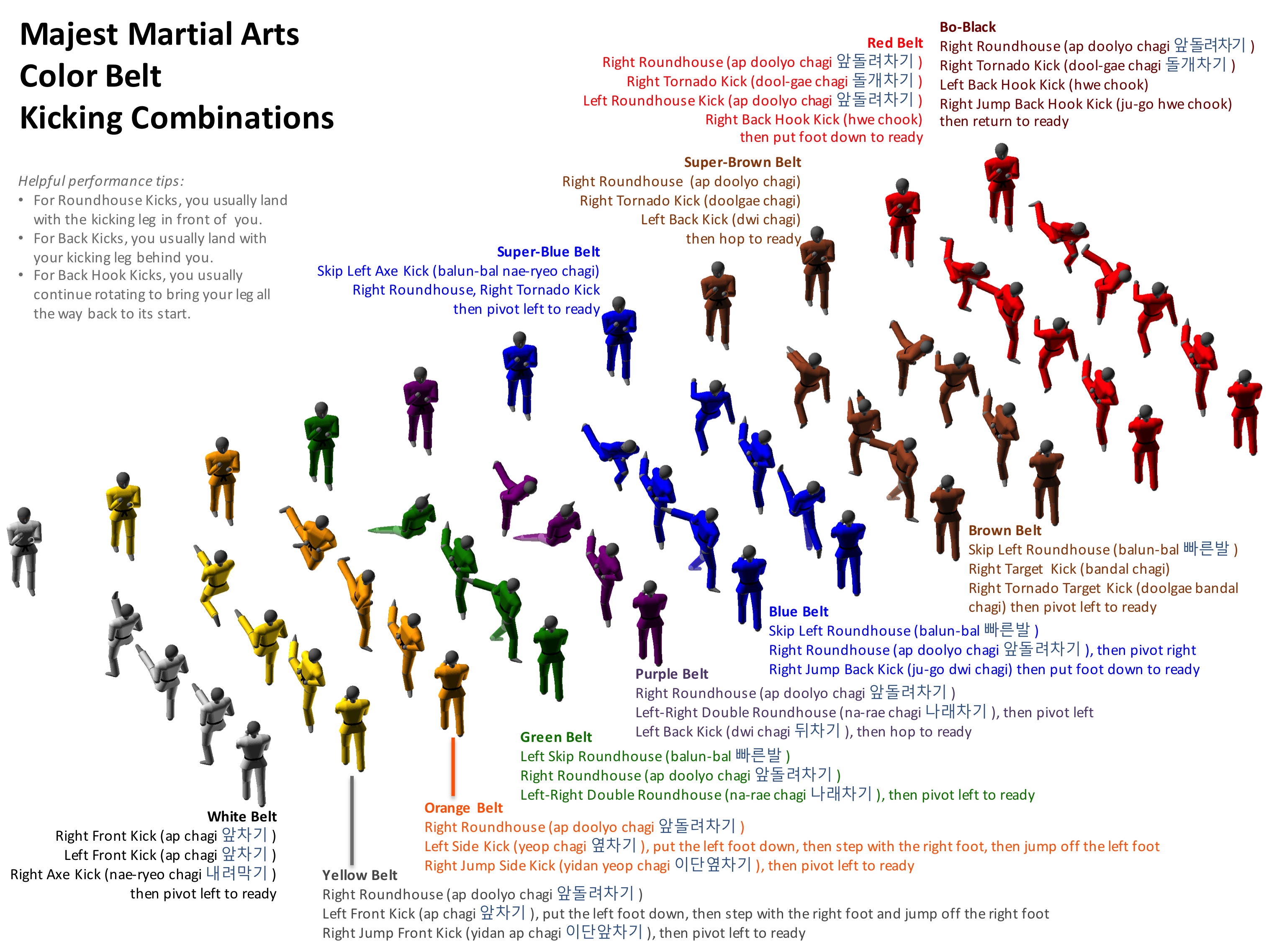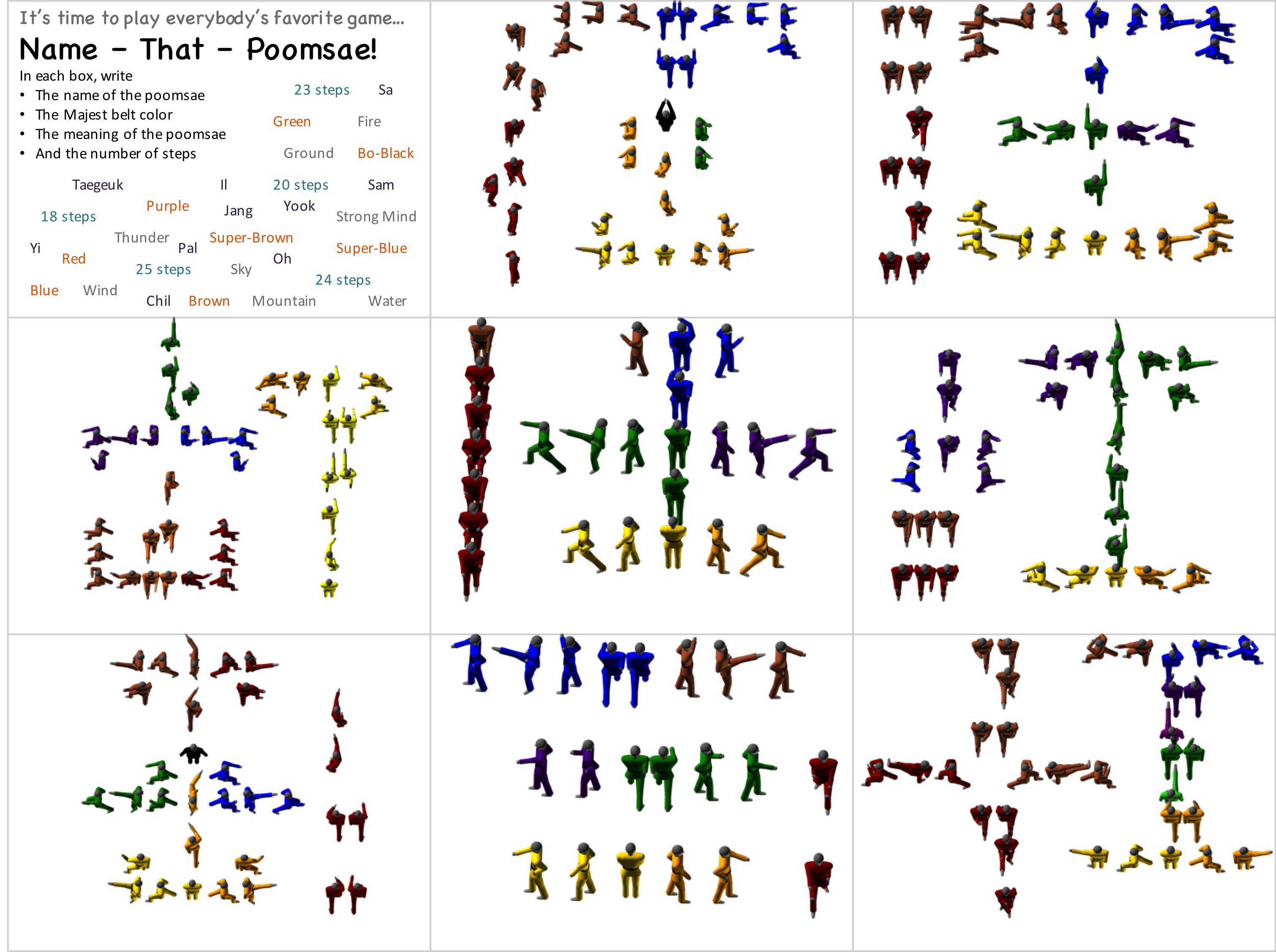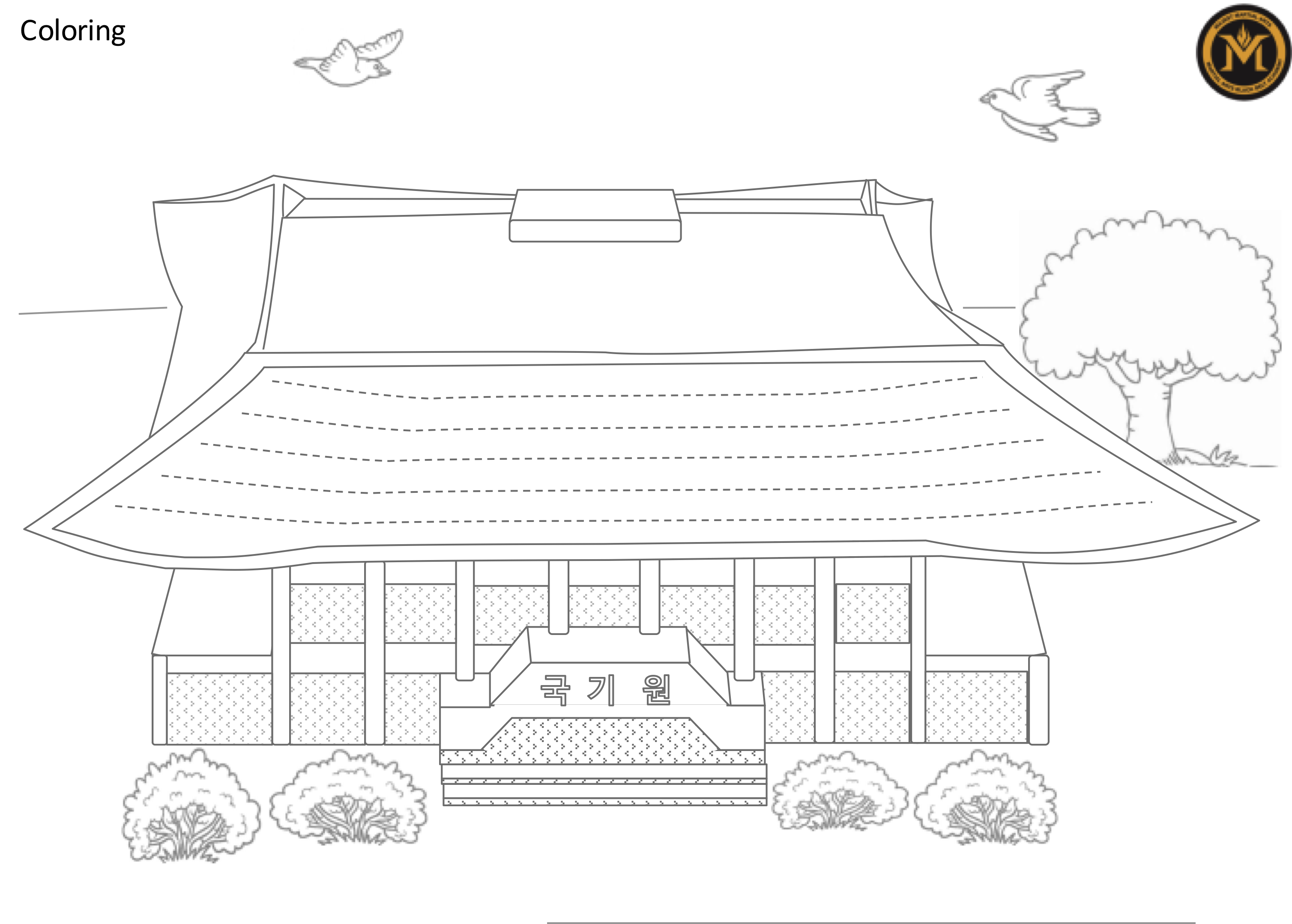Red Belt Curriculum
Majest Martial ArtsRed Belt students at Majest (1st gup) practice the form Taegeuk Chil Jang. The I Ching trigram for this poomsae (☶) represents mountain — immovable, solid, and resolute. You can see this for example at step 16, where the Low Cross Block is used to stop an opponent in their tracks, rather than divert their attacks with deflecting blocks as in previous poomsae. The prevelance of the Tiger Stance (also called Cat Stance) is also symbolic of the Korean tradition of associating tigers with life in the mountains. This form, and the one that follows, are particularly challenging, and students can spend a lifetime trying to perfect their movements.
The fact that the first two lines of the trigram for this form (☶) are broken lines indicates that the first two major turns of this form are pivots-in-place, rather than lead-foot turns. Read more about this poomsae — including step-by-step instructions — at Taegeuk Chil Jang. The videos below are particularly excellent performances of this difficult form. Pay particular attention to the movements from step 12 onward: the challenging Scissors Block, the way the Opening Blocks are performed with elbows properly tucked-in, the way the arms pull downward and the body remains balanced during the Knee Strike, the importance of a clean Hinge chamber before the Double Uppercut — this is an extremely challenging sequence, and the student can learn a lot about correct technique by studying these videos closely.
1st gup - Red Belt, Taegeuk Chil Jang (step by step)
1st gup - Red Belt, Taegeuk Chil Jang (with written instructions)
1st gup - Red Belt, Taegeuk Chil Jang
1st gup - Red Belt breaking
1st gup - Red Belt kicking combination
Lower-belt students practice only 3 kicks in a combination, but beginning with Red Belt students now begin to practice 4- and 5-kick combinations. The Red Belt combination begins with a Roundhouse Kick with the right leg. Continuing to pivot counter-clockwise, the student performs a Tornado Kick, also with the right leg. Stepping down with the right foot in front (as one normally does with any Roundhouse kick) the student then performs another Roundhouse Kick now with the left leg, and continues to pivot clockwise to a Back Hook Kick with the right leg. Note that in this case, the right leg is simply put-down behind the student after the Back Hook Kick, rather than being brought all the way around as is more often seen.
Where am I supposed to land? One of the more subtle points to understand about kicking combinations is where to land your feet after a kick:
- For Roundhouse Kicks (including Tornado Kicks), the kicking leg usually lands in front of the body after the kick.
- For Back Kicks (including Jump Back Kicks) the kicking leg usually lands behind the body after the kick (the theory is that if your leg doesn’t naturally want to land behind you, you probably didn’t back-kick hard enough).
- For Back Hook Kicks (including Jump Back Hook Kicks) the kicking leg should come all-the-way back-around to the starting position (the theory being that your rotational momentum is bringing you a full 360 degrees back to the start). The combination shown here is a rare exception to this rule.
Understanding these principles generally helps you to understand how to transition from one kick to the next in these more complex kicking combinations.
1st gup - How Parents Can Help
Now that your child is nearing the end of their “color belt” training, it’s important that they start to review all of the material that they have learned previously. They will need to know all 11 forms (3 Kibon forms and 8 Taegeuk forms) in order to pass their Black Belt test. In addition to knowing how to perform the poomsae, they should know the names of each form and what its associated trigram symbolizes. As time permits, have your child review the material on these Curriculum pages and practice at home to ensure that they remember all of the lessons of their previous belt colors.
Just for Fun
Print and color! This is the Kukkiwon, the World Taekwondo Headquarters, in Seoul, South Korea.












